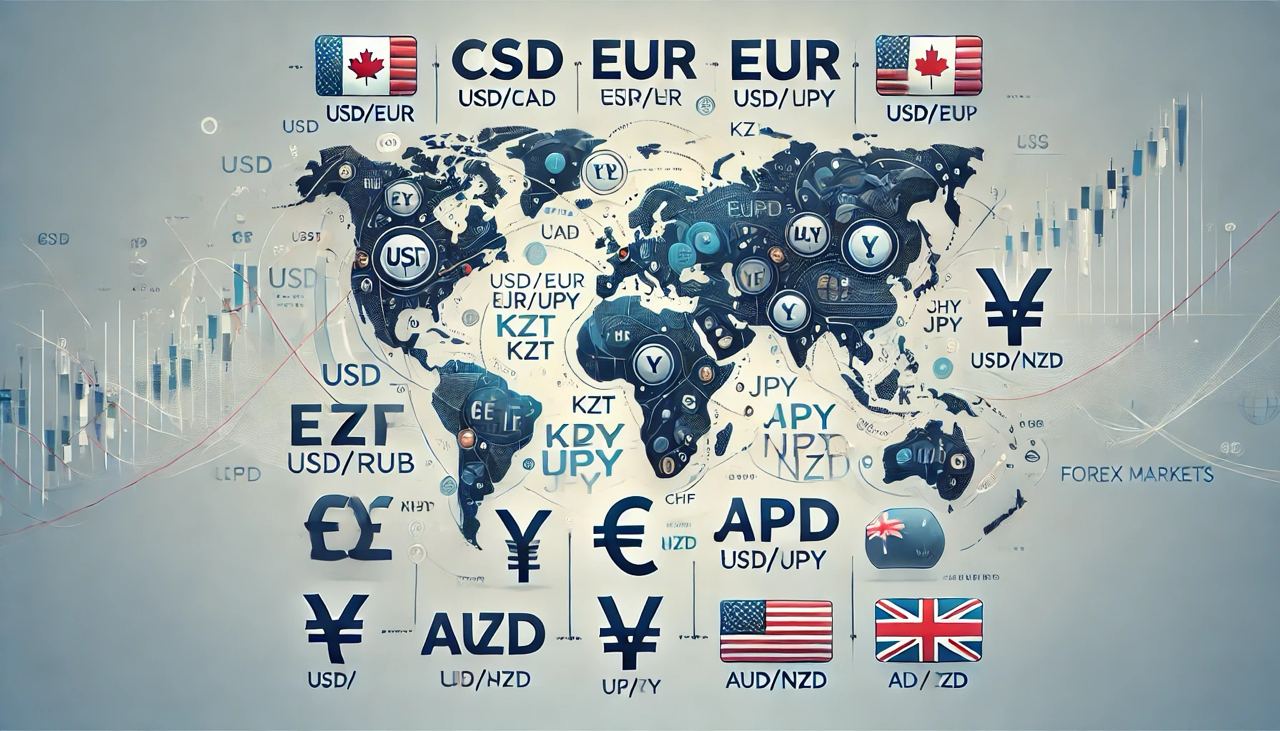Learn Trading for Free and Without Registration
An Online Glossary to Study Trading Independently
Forex Market Volume
Understanding Forex Market Volume
Forex, the largest financial market in the world, operates without a centralized location. Unlike the New York Stock Exchange or other centralized markets, Forex is an over-the-counter (OTC) market, conducted through a decentralized network of banks, financial institutions, corporations, and retail investors.
This unique structure allows for 24-hour trading and attracts millions of participants globally. With daily trading volumes reaching trillions of dollars, Forex remains the most liquid and accessible financial market.
Key Numbers: Forex Market Volume
The trading volumes in Forex are staggering:
- Average daily trading volume in 2023: approximately $7.5 trillion, according to the Bank for International Settlements (BIS).
- Retail investors’ contribution: about 6% of the total market volume.
Top 10 most traded currencies:
- USD (US Dollar): Involved in 88% of all transactions.
- EUR (Euro): Accounts for about 31% of the market.
- JPY (Japanese Yen): Holds third place with 17%.
Other notable currencies include GBP, AUD, CAD, CHF, among others.
Why Does the US Dollar Dominate Forex?
- Global Reserve Currency: The US dollar makes up 62% of global foreign exchange reserves (IMF data).
- Largest Economy: The US economy has a GDP exceeding $25 trillion, making it the world’s largest.
- International Transactions: Nearly 80% of global transactions, including oil, gold, and other commodities, are conducted in dollars.
- Stability: Political and economic stability in the US makes the dollar a safe haven.
Forex Trading Sessions
The Forex market operates 24/5 due to overlapping trading sessions across the globe. There are four primary sessions:
- Pacific Session (Sydney)
- Operating hours: 21:00–06:00 GMT.
- Characteristics: Low volatility; ideal for trading AUD/USD and NZD/USD pairs.
- Asian Session (Tokyo)
- Operating hours: 23:00–08:00 GMT.
- Characteristics: Active trading of USD/JPY, EUR/JPY, AUD/JPY pairs.
- European Session (London)
- Operating hours: 07:00–16:00 GMT.
- Characteristics: The most liquid session. Popular pairs include EUR/USD, GBP/USD, USD/CHF.
- American Session (New York)
- Operating hours: 12:00–21:00 GMT.
- Characteristics: High volatility, especially for USD/CAD, USD/JPY pairs.
How Retail Investors Impact Market Volume
Retail investors account for approximately 6% of the total Forex volume, which is equivalent to about $450 billion daily. Their influence includes:
- Creating liquidity: Through numerous small transactions.
- Increasing volatility: Particularly in less liquid currency pairs.
- Setting trends: Retail traders often amplify existing trends by following market movements.
Historical Growth in Forex Trading Volumes
- 1998: $1.5 trillion daily.
- 2010: $4.0 trillion daily.
- 2023: $7.5 trillion daily.
Factors driving growth:
- Technological advancements: Online trading platforms have made Forex accessible to millions.
- Globalization: Increased international trade.
- Retail participation: The growing interest of individual investors in Forex trading.
Liquidity in Forex and Its Importance
Liquidity refers to the ability to quickly buy or sell an asset without causing significant price changes.
- High Forex liquidity ensures that trades worth millions can be executed instantly.
- Volatility varies by time and currency pair. For example, EUR/USD is less volatile at night but highly active during European and American sessions.
Conclusion
Forex is not only the largest financial market but also a cornerstone of the global economy. Understanding trading volumes, sessions, and the roles of various participants provides traders with the insights needed to navigate and capitalize on market opportunities.
Invest in knowledge to succeed in this dynamic and exciting world!



